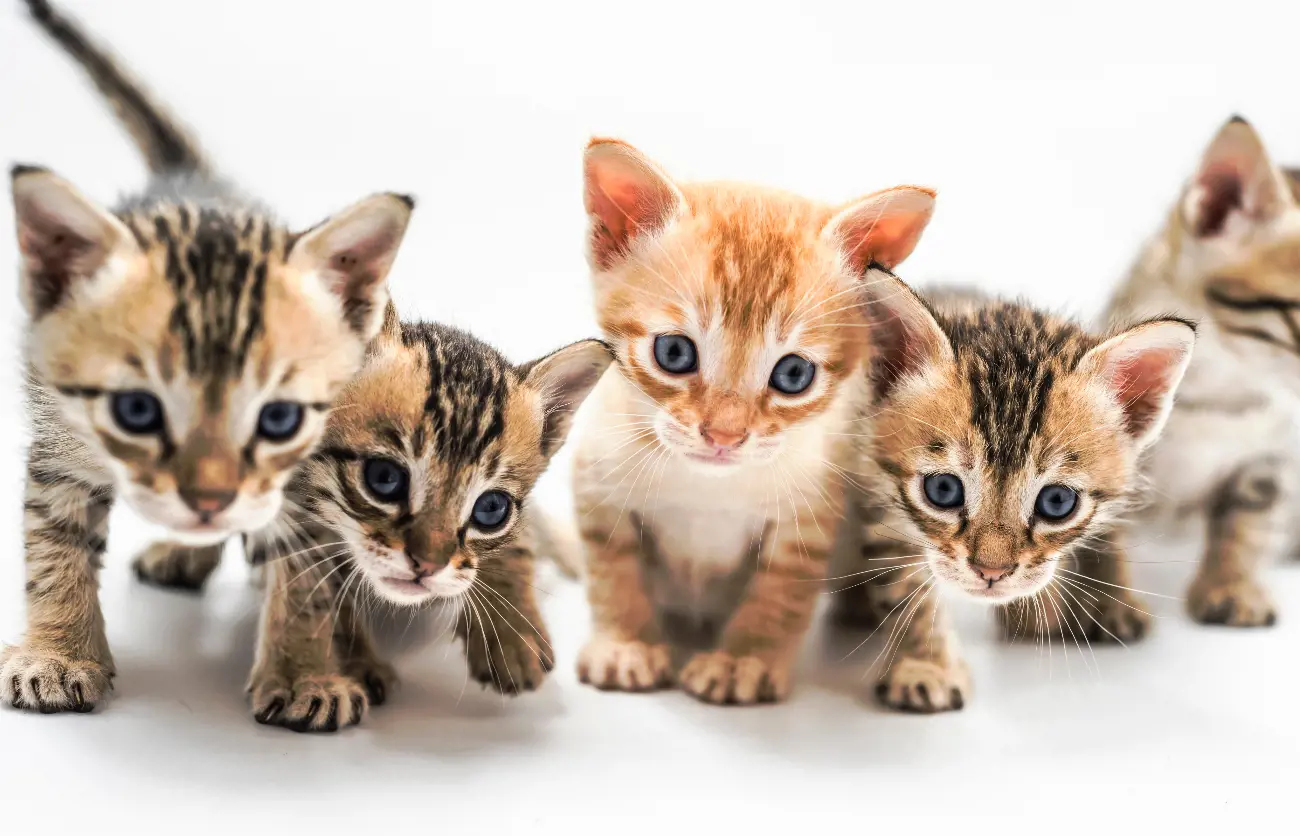How to help a cat with hairballs
29th June, 2021
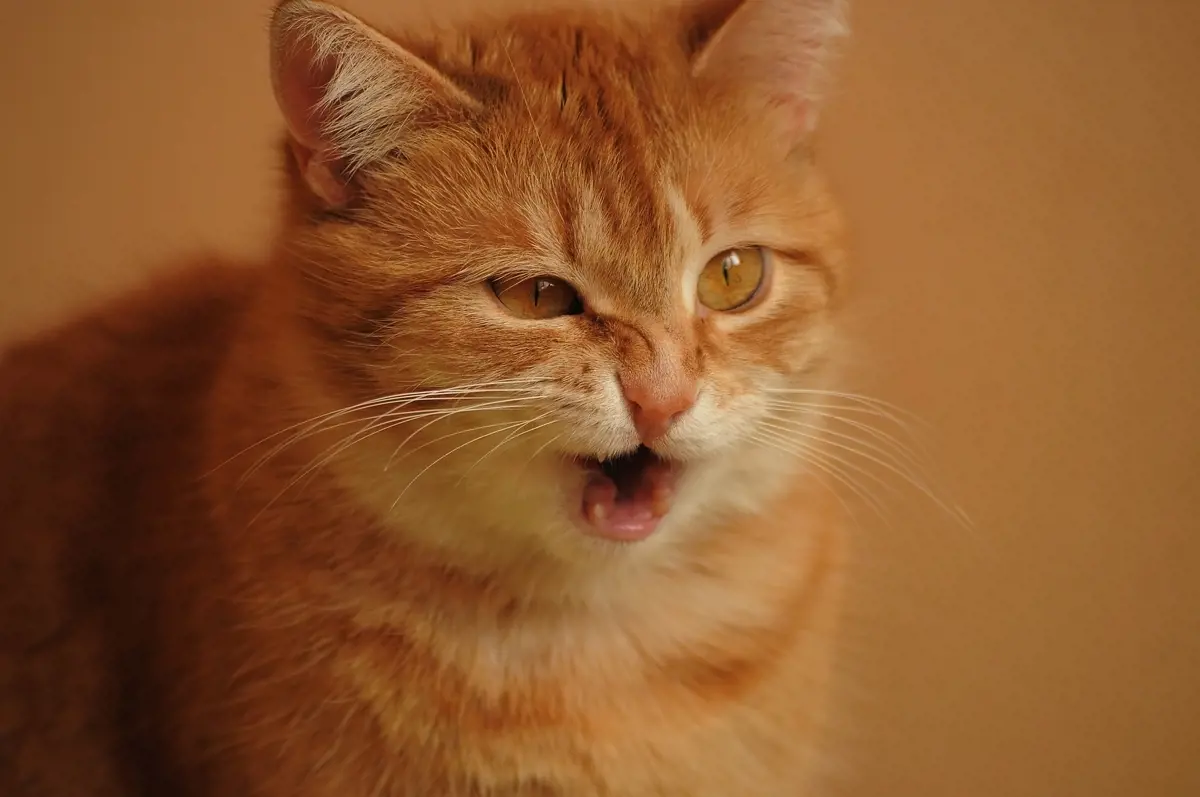
You want your cat to be a playful, cuddly ball of fun, so it can be upsetting to see your pet seemingly coughing and choking on a hairball. While the sound and sight of hairballs may be less than pleasant, the odd one is nothing to worry about.
If the hairballs are frequent or your cat shows other signs of ill health, it might be time to take a trip to the vet. Good insurance for a pet may help to cover the cost of treating your cat’s problem hairballs.
Why do cats get hairballs?
Cats spend up to 50% of their waking time grooming themselves. Their tongues have rear-facing barbs that act like a comb to run through their fur.
This helps them to stay clean, maintain their coat, stay cool, soothe themselves and even bond with other cats in their environment.
Through this act of combing, some hairs will enter the cat’s mouth. Generally, these are swallowed and pass out into faeces along with the cat’s food.
Hair is made from a protein called keratin which cannot be digested (broken down) by a cat’s digestive system along with the food they eat. So feline stools typically contain bits of their fur from grooming.
Sometimes, the hair a cat swallows clumps into a ball and cannot be processed through the digestive system in the usual way.
The hair gets squashed into a sausage shape and, because it cannot move down into the intestine, it comes upwards instead. The result is a cat vomiting up a regurgitated hairball.
It can take a feline around 48 hours of regular gagging and retching to expel a hairball. Cats sometimes eat grass to make themselves vomit when they have a hairball, or show signs of constipation and lethargy.
The most common time of year for hairballs is the spring, when your cat is shedding its winter coat and carrying out additional grooming to clear the hair.
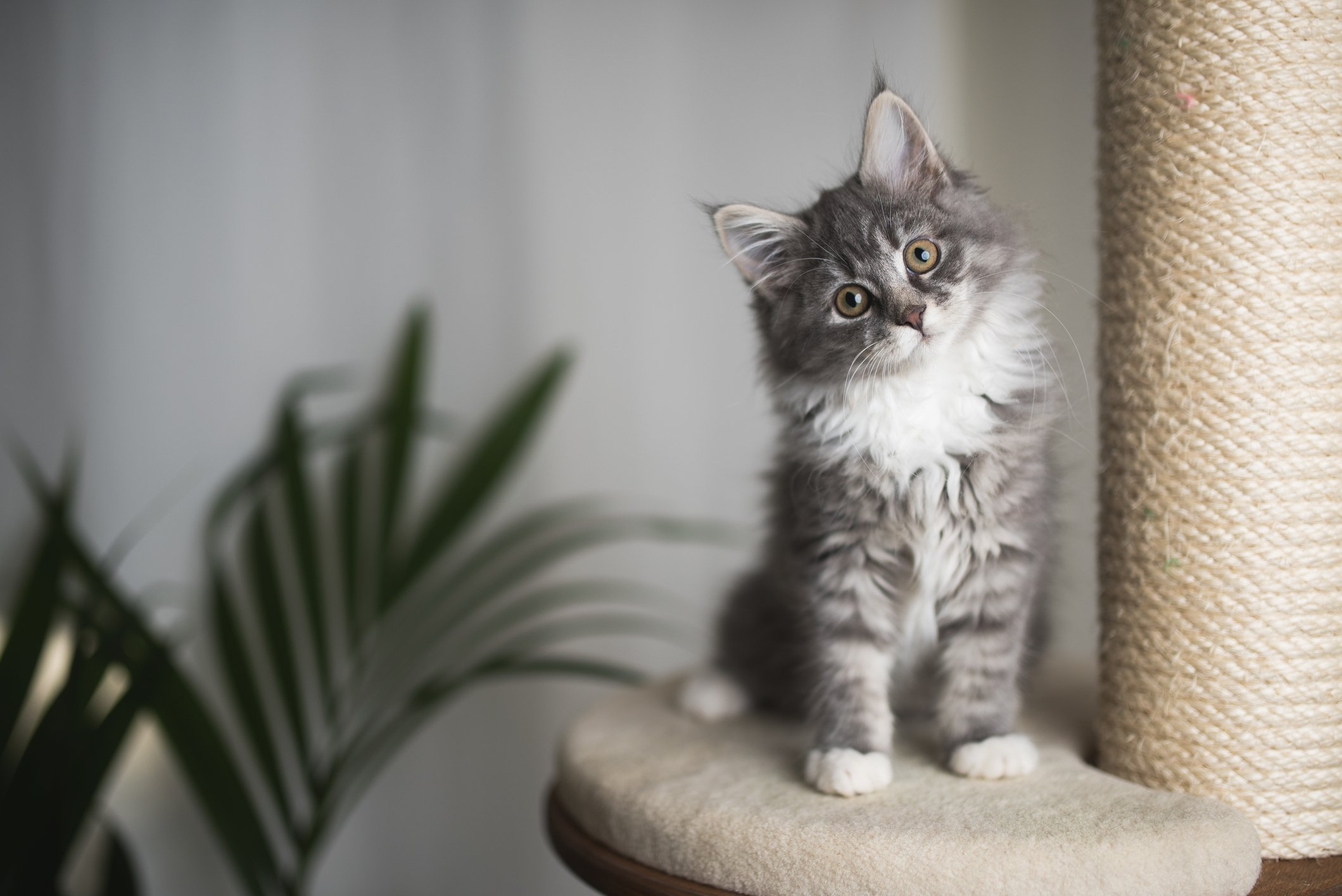
What can you do to help a cat with a hairball?
It’s important not to worry too much at the first sign of a hairball. It’s hard to say how many hairballs represent a healthy number, as this varies between different cat breeds.
Some experts say a hairball every week or fortnight is nothing to worry about, while others say one or two a year is a better sign of a healthy cat.
It’s important to know what’s normal for your cat and notice if their hairballs become more regular, as this could be a sign of a health problem.
There is no shortcut for simply being an attentive and loving owner of your cat – spending lots of time together will give you the best chance of noticing any symptoms or changes that could be a sign of illness.
Most of the time, a cat will be able to clear a hairball by themselves. You should simply allow them the space and the time to do this, and avoid stressing them out by fussing over them. You should observe your cat from a distance to ensure they bring up the hairball, so you can dispose of it.
If your cat struggles to pass a hairball, there are a few remedies that might work:
- Laxatone: An oral gel that helps to bind hair in your cat’s stomach, making it easier to pass through the digestive tract.
- Hairball diet: Some cat foods are formulated to help prevent or manage hairballs. These foods usually contain lots of fibre to ensure the steady processing of food and hair through the gut.
- Prescription remedies: Your vet will be able to advise you on whether prescription-only foods or supplements might be appropriate for your cat.
- Laxatives: These should only ever be used at the direction of your vet.
Can hairballs be prevented?
It’s not possible to prevent your cat from ever having a single hairball, but you might be able to reduce the frequency of hairballs if you can address the volume of fur that passes through your pet’s gut.
Regular grooming of your pet will help to remove loose hair from their coat, which will cut down on the amount your puss swallows through their normal grooming activities.
If your cat is a long-haired breed, the risk of hairballs is higher so you may even want to groom daily.
For some cats, it can help to feed little and often rather than giving one or two bigger meals a day. Spreading food intake through the day can help to prevent overloading your cat’s system and causing constipation.
Grooming can be a pleasurable activity in itself, helping to calm you and your pet and build your bond. It can also help to prevent mats and tangles from forming in your cat’s fur.
As well as grooming, keeping your cat in good health can be an effective way to prevent problems.
For example, ensure your cat has a healthy diet without too many treats, that they stay active through games and exercise and that they are not exposed to a stressful environment.
Hairballs and older cats
As cats age, their bodies become less efficient at key processes, including digestion. Older cats often have slower digestion which can lead to constipation, allowing hairballs to accumulate along with their stools.
Older cats also tend to groom more than their younger feline friends, who are too busy chasing butterflies and climbing the curtains to worry about grooming. Mature cats take the time to keep their coats in good condition, but by doing so they consume more hair.
If your elderly cat is not using the litter tray according to its usual habits and seems a bit lethargic, it is a good idea to have it checked out by the vet. It could be that a tweak in your cat’s diet or the use of an anti-furball laxative could sort the problem out.
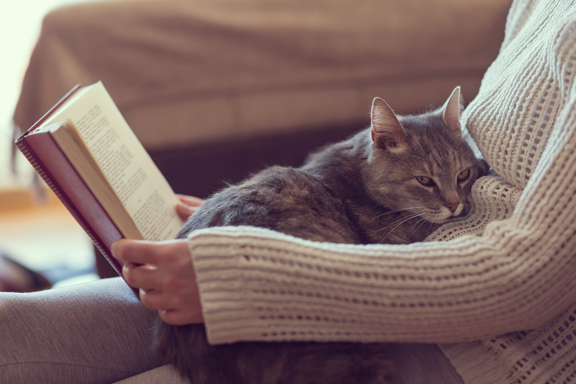
When should you be concerned about your cat’s hairballs?
There are some situations in which hairballs represent a threat to your pet’s health – or even their life.
If a very large hairball forms, your pet may be unable to regurgitate it and it will continue to grow, eventually causing an obstruction in the gastrointestinal tract.
So, when should you worry about your cat’s hairballs?
Frequent hairballs
If your cat produces hairballs more than every fortnight or so, you should chat to your vet. This can be a sign that your pet is overgrooming as a symptom of stress, a skin condition or an allergy.
The additional grooming can lead to added consumption of hair, as well as bald patches. Purely Pets policyholders can call the 24-Hour Vet Helpline if they’re worried.
Bile accompanying the hairball
If you notice greenish liquid accompanying your cat’s hairball, you should see the vet without delay – this can be a sign of pancreatitis.
Taking more than a few days to pass a hairball
It should not take more than a day or two for a cat to pass a hairball – if your cat is gagging for longer, see your vet to check for a problem.
For one thing, prolonged gagging and retching can make your cat dehydrated.
Lethargy and lack of energy
Producing a hairball can make cats lethargic, but it can also be a sign of a more serious problem so if they are very sleepy or unwilling to eat, you may need help.
Constipation or diarrhoea
Stools coming too slowly or too quickly are both signs that your cat’s digestive system is under strain.
Change in appetite
This is another sign that all is not well in your cat’s stomach. It might be just a coincidence if it occurs when your cat is retching up a hairball, but it’s worth getting it looked at to be on the safe side.
Swollen or sensitive stomach
A tender stomach is a sign of discomfort or pain, which could be caused by a hairball within your cat’s gut.
If you want to learn more about feline health, check out our blog on the five most common cat health conditions.
What do vets do to treat hairball problems?
If you need to take your cat to the vet with a hairball-related problem, they are likely to carry out a physical examination or even an X-ray to identify whether an oversized hairball is the issue.
Treatments and medications are usually the answer but in extreme cases, surgery may be required to extract the hairball.
Emergency surgery is fraught with risk, underlining the importance of consulting your vet as soon as you notice a problem so it can be dealt with before the need for an operation arises.
Peritonitis, or an infection of the abdomen, is a common side effect of surgery or where the hairball has torn the gut tissues, and it can be fatal. If your cat needs surgery, they may also need antibiotics, pain relief, a fluid drip and other medications.
Your vet may try giving your cat an injection that will cause vomiting, which can help to bring it up. However, this is only advisable if the hairball has not passed into the stomach. Making your cat sick in this way should never be done at home.
It is also possible that your vet will administer a medication that helps to loosen the hairball inside your cat’s body, breaking it down and making it easier to pass. This may be covered on your pet insurance policy.
Vets will also be on the lookout for underlying issues that could be causing your cat’s hairballs to become a problem. For example, a gut issue could be a root cause as the cat’s stools are not sweeping out the gut properly.
Another possible scenario is that your cat has asthma, which can make it harder for them to clear a hairball.
If your cat is unable to move hair along his digestive tract efficiently, chances are that other material in the gut is also stagnating.
If substances such as pathogens and antigens in the stools remain in contact with the walls of the gut for too long, this can cause bacterial overgrowth that impacts your cat’s absorption of essential nutrients.
An imbalance in gut bacteria can lead to inflammatory conditions such as inflammatory bowel disease.
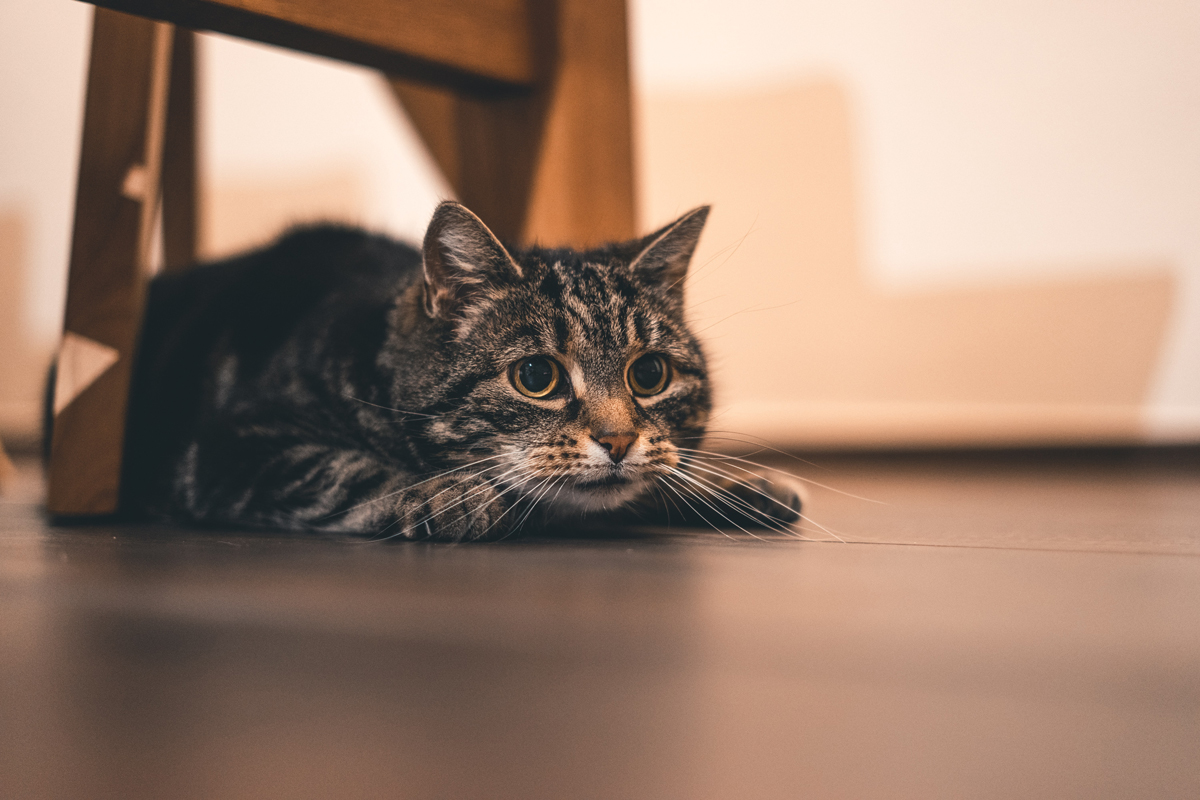
Managing the cost of hairball treatment
In a worst case scenario, if your cat needs emergency surgery to remove a hairball that is blocking their gut, the outlook is not only dangerous for them but also expensive for you.
The cost of surgery and vet care can easily run into thousands of pounds – meaning you could be worrying about money when you’re also extremely stressed about your pet.
Thankfully, in the vast majority of cases surgery is not necessary and the hairball can be dealt with using other methods and medications.
However, quality pet insurance is always invaluable at these times because it means your insurer may pick up the tab for vet care, rather than you covered under your insurance.
Why insure with Purely Pets?
Purely Pets offers pet insurance that is tailored to your individual needs and preferences. Our insurance allows you to select from 15 different levels of cover so you can decide how much you want to spend and what type of cover will work for you and your pet.
Our pet insurance ensures that if your cat falls ill, you can provide them with care as fast as possible, without stopping to worry about the financial side.
Policies typically cover vet fees from £1,000 to £15,000, as well as paying for special diets, complementary treatment, boarding fees and holiday cancellation.
If you are unlucky enough to experience the loss or theft of your pet, our policies also provide cover for advertising and reward costs to help assist with a safe return home.
Why not get in touch to talk through your pet insurance needs today?
Policy benefits, features and discounts offered may very between insurance schemes or cover selected and are subject to underwriting criteria. Information contained within this article is accurate at the time of publishing but may be subject to change.
Helpful Pages
Recent Posts
Pet Insurance Quote
- 98% claims paid *
- Claims paid directly to vets
- 24/7 vet video consultations
- Interest free monthly payments
